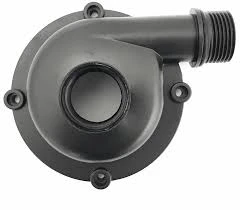Mobile:+86-311-808-126-83
Email:info@ydcastings.com
Exploring the Benefits and Techniques of Aluminium Sand Casting for Modern Manufacturing
Aluminium Sand Casting A Comprehensive Overview
Aluminium sand casting is a widely used manufacturing process that involves pouring molten aluminium into a sand mold to create various components. This method is favored in many industries due to its versatility, cost-effectiveness, and ability to produce complex shapes with excellent surface finishes.
The process begins with the creation of a pattern, typically made from materials such as wood, metal, or plastic. The pattern is a replica of the final product and is used to form the mold cavity. Sand, often mixed with a bonding agent like clay, is packed around the pattern to create a mold. The resulting mold is then carefully removed from the pattern, resulting in two halves that can be reassembled to form a complete mold.
One of the significant advantages of aluminium sand casting is the ability to create intricate designs that would be difficult or impossible to achieve using other manufacturing methods
. The sand mold can easily accommodate detailed features and thin walls, making it ideal for applications in automotive, aerospace, and consumer products. Additionally, the process can produce parts in various sizes, from small components to large structures, further broadening its scope of use.aluminium sand casting

Once the mold is prepared, molten aluminium is poured into the cavity. The temperature of the aluminium typically ranges from 660 to 750 degrees Celsius. Upon cooling, the aluminium solidifies and takes the shape of the mold. After sufficient cooling, the sand mold is broken apart, and the casting is removed. Finishing processes such as machining, sanding, or polishing may follow to refine the final product's dimensions and surface quality.
Aluminium sand casting also provides a sustainable manufacturing solution. Aluminium is a recyclable material, and waste sand used in the casting process can often be reused. This characteristic makes it an attractive choice for environmentally conscious manufacturers.
Moreover, advancements in technology have led to improvements in sand casting capabilities. The use of computer-aided design (CAD) allows for the precise design of patterns and molds, leading to fewer errors and faster production times. Additionally, innovations in sand mixtures and bonding agents have improved the strength and durability of molds, enhancing the overall quality of the castings.
In conclusion, aluminium sand casting is a crucial manufacturing process known for its capability to produce high-quality, intricate components at a reasonable cost. Its adaptability to various industries, combined with the sustainability of materials, positions it as a reliable choice for modern manufacturing needs. As technology continues to advance, the potential applications and efficiencies of aluminium sand casting are expected to grow, further cementing its role in the production landscape.
-
Impeller Technology That Powers Precision in Pump SystemsNewsMay.22,2025
-
Valve Durability Begins with Quality Cast Iron ComponentsNewsMay.22,2025
-
Performance Cooling with Advanced Automobile Water Pump SolutionsNewsMay.22,2025
-
How Motor Housing and Oil Pans Shape Engine PerformanceNewsMay.22,2025
-
How Metal Castings Drive Modern Manufacturing EfficiencyNewsMay.22,2025
-
Exploring the Engineering Behind Valve Body CastingsNewsMay.22,2025











